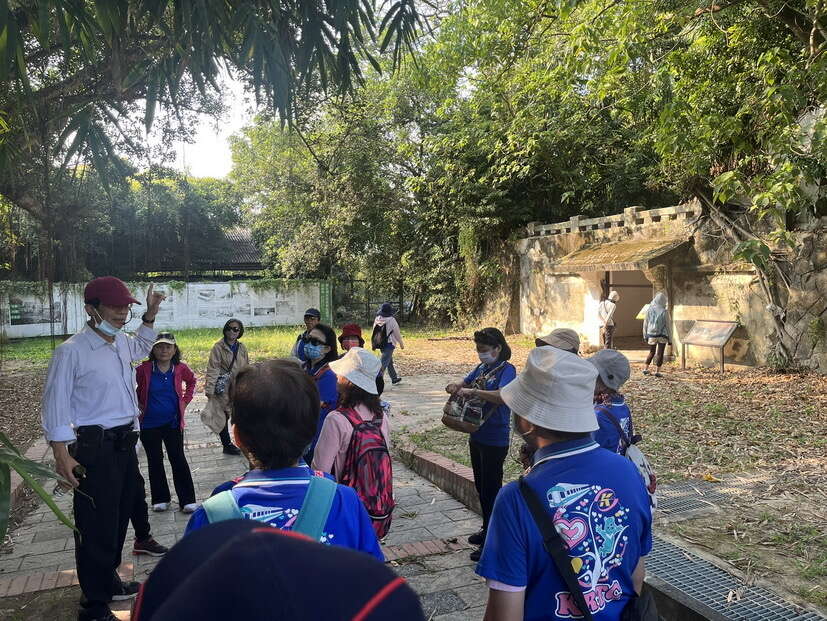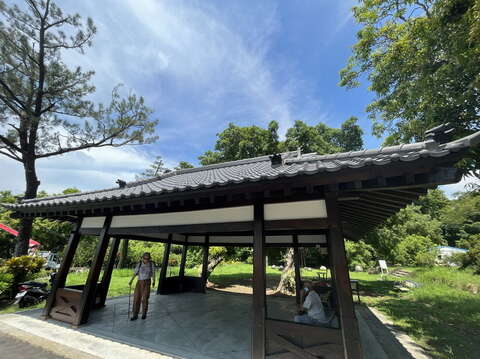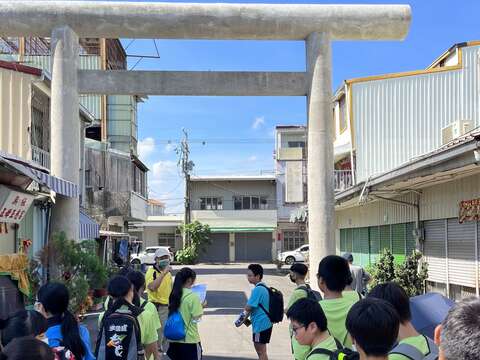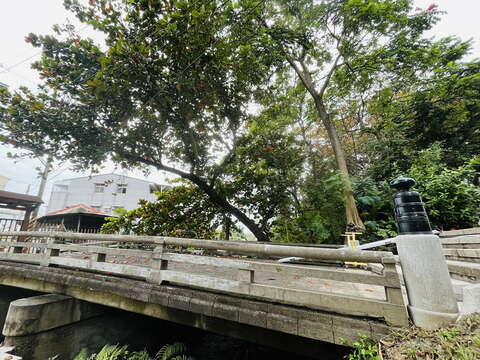Travel Back in Time with Free Weekend Guided Tours of Xinhua Shinto Shrine at Hutoupi
Posted Date:2025-01-07
152

Introduce
Hutoupi Reservoir was constructed in 1846 and was the first reservoir in Tainan. Today, it is a well-kept secret where natural ecology meets history and culture. The remnants of Xinhua Shinto Shrine within the park is listed as a historical building by Tainan City. This cultural treasure has been restored to classical elegance from the Showa Era.
Mayor Huang Wei-che stated that the remnants of the Xinhua Shrine has been restored to its original historic appearance by the Tourism Bureau and is the best-kept secret of Hutoupi. Free guided tours are offered by the park on public holidays as well. Volunteers lead tourists on a stroll along the sacred way as they pore over the historic building’s stories and past glories.
The Xinhua Shinto Shrine was first built in 1943. The outer gardens originally featured a Torii gate, sacred bridge, and staff dormitory. The inner gardens included the outer shrine, inner shrine, and underground sanctuary. Most of the buildings were lost due to changes in land use after World War 2. Nevertheless, the ruins of the Torii gate, the sacred bridge, the rest area and stairways still survive.
Director-General Lin Kuo-hua from the Tourism Bureau of Tainan City Government invited people interested in the Xinhua Shinto Shrine to visit on a weekend. Trained guides will lead tours starting from the magnificent Torii gate symbolizing the boundary between the mortal and divine realms. As you pass over the sacred bridge, take note of the classical jewel carvings. Follow the sacred way and you will see the bases of stone lanterns and ruins of the outer shrine stairway from the original shrine lining the route. The red-roofed rest area of the 2nd shrine is a fully preserved example of Cypress timber craftsmanship from the Japanese period. The timber framing has an architectural beauty of its own. The underground shrine structure in the park is one of the few examples of its type in Taiwan. No exploration of the shrine’s history can be complete without it.
Director-General Lin added that visitors to the Hutoupi Scenic Area should not neglect to stop by the souvenir shop selling local specialties after their tour of history and culture. The shop brings together high-quality agricultural produce from throughout Taiwan all in one place.
Come visit with friends and relatives over the weekend. Explore the secret garden that is the Hutoupi Scenic Area. Experience the symphony of nature and history along with the hospitality of the local people.
Mayor Huang Wei-che stated that the remnants of the Xinhua Shrine has been restored to its original historic appearance by the Tourism Bureau and is the best-kept secret of Hutoupi. Free guided tours are offered by the park on public holidays as well. Volunteers lead tourists on a stroll along the sacred way as they pore over the historic building’s stories and past glories.
The Xinhua Shinto Shrine was first built in 1943. The outer gardens originally featured a Torii gate, sacred bridge, and staff dormitory. The inner gardens included the outer shrine, inner shrine, and underground sanctuary. Most of the buildings were lost due to changes in land use after World War 2. Nevertheless, the ruins of the Torii gate, the sacred bridge, the rest area and stairways still survive.
Director-General Lin Kuo-hua from the Tourism Bureau of Tainan City Government invited people interested in the Xinhua Shinto Shrine to visit on a weekend. Trained guides will lead tours starting from the magnificent Torii gate symbolizing the boundary between the mortal and divine realms. As you pass over the sacred bridge, take note of the classical jewel carvings. Follow the sacred way and you will see the bases of stone lanterns and ruins of the outer shrine stairway from the original shrine lining the route. The red-roofed rest area of the 2nd shrine is a fully preserved example of Cypress timber craftsmanship from the Japanese period. The timber framing has an architectural beauty of its own. The underground shrine structure in the park is one of the few examples of its type in Taiwan. No exploration of the shrine’s history can be complete without it.
Director-General Lin added that visitors to the Hutoupi Scenic Area should not neglect to stop by the souvenir shop selling local specialties after their tour of history and culture. The shop brings together high-quality agricultural produce from throughout Taiwan all in one place.
Come visit with friends and relatives over the weekend. Explore the secret garden that is the Hutoupi Scenic Area. Experience the symphony of nature and history along with the hospitality of the local people.






